This article was medically reviewed by Janice Litza, MD. Dr. Litza is a board certified Family Medicine Physician in Wisconsin. She is a practicing Physician and taught as a Clinical Professor for 13 years, after receiving her MD from the University of Wisconsin-Madison School of Medicine and Public Health in 1998.
There are 15 references cited in this article, which can be found at the bottom of the page.
This article has been viewed 83,346 times.
Eczema is a chronic condition that causes dry, red, itchy skin. The condition has been notoriously difficult to understand and treat. New research suggests that poorly controlled eczema can increase the risk for staph infections.[1] Antibacterial treatment, however, is extreme and should only be ventured for short periods of time. Careful skin care is still the best long-term treatment available.
Steps
Using Antibacterial Treatment
-
1Consult a doctor. Antibiotics have an array of potentially negative side effects, because of which antibacterial treatment cannot be used indefinitely or indiscriminately.[2] Before taking antibiotics, talk to a doctor. She will be able to say whether the condition is severe enough to warrant antibiotic treatment.
- Your doctor will be able to determine if your eczema is also infected with staph. If so, she will prescribe some sort of antibiotic treatment.
-
2Use a topical solution. Topical solutions, which can be spread over the skin, are used for smaller outbreaks. If prescribed, apply the ointment to the rash three times a day for approximately two weeks.[3]
- Mupirocin and fusidic acid are the two commonly prescribed creams in these cases.[4]
Advertisement -
3Take oral antibiotics. Oral antibiotics, instead of affecting a small area of skin, will affect your whole body. Use of oral antibiotics is only recommended in case of extreme infection.[5]
- Many oral antibiotics are available. If your infection is recurrent, draining, or very recent, your doctor may need to swab the area to determine what sort of infections you might have and what they are resistant to. This will inform his decision as to which oral medications should be prescribed.[6]
Using Other Medical Treatments
-
1Try hydrocortisone. Hydrocortisone is a topical corticosteroid that can be spread over the rash. It will not cure it, but it will reduce itching. Hydrocortisone can be obtained in a very low dose over-the-counter and thus should generally be the first medical solution you try.
- Apply four times a day for no longer than seven days. If you have shown no improvement by then, you should speak with your doctor.[7] Do not begin use of any other hydrocortisone product until you have spoken with your doctor.
-
2Use prescription topical corticosteroids. These are stronger steroids that can be applied directly to the rash during flare-ups. They can effectively reduce itching and irritation. Topical corticosteroids are not meant for long-term use, as they can cause serious side effects.
- These creams can cause the skin to thin and produce stretch marks.[8]
- These medications must be prescribed by a doctor. Always apply strictly as recommended by your doctor. Do not use more often than recommended.
- Your doctor may suggest mixing your steroid cream with a good, thick moisturizing cream or ointment to reduce the dose and manage flares — you want to use as little of this product as possible to reduce side effects.
-
3Try topical calcineurin inhibitors. These are also topical creams that reduce itching and rashes. They do not include steroids and thus do not cause thinning of the skin or stretch marks. These, however, are only recommended if other therapies have failed.[9]
- Two name brand creams that are currently on the market are Elidel and Protopic.
-
4Try phototherapy. Phototherapy involves prolonged exposure to artificial light that reduces itching, and inflammation while increasing the ability of your skin to fight bacteria. It has been effective in 60–70% of patients who did not respond to topical solutions.
- Although these treatments remove much of the UV light that causes the negative effects you would experience in a tanning bed, you still may experience some of the consequences associated with prolonged exposure to light. These risks include aging, burning, and even skin cancer.
- This treatment also requires two to three visits to the doctor per week, for a period of a month to two months. Thus, it can mean a substantial time commitment.
- To receive phototherapy, you will likely need to talk to a dermatologist who can refer you to a hospital that has the appropriate facilities.[10]
- Do not attempt at-home treatments. Proper facilities will remove much of the dangerous UV light. If you try to replicate this treatment with prolonged exposure to sunlight or sun tanning beds, you will put yourself at considerable risk for skin cancer and other skin problems.
Taking Proper Care of Your Skin
-
1Take lukewarm showers or baths. Hot showers and baths can dry out your skin, worsening your condition.[11] Shower once daily, for about 10 to 15 minutes. Use gentle, nonabrasive soap. Bleach and vinegar baths can also prevent or end staph infections in your eczema.
- Take bleach baths to kill bacteria and prevent outbreaks. Use half a cup of bleach for a full bathtub and soak for approximately 10 minutes. Try to use this procedure approximately two to three times a week.[12]
- For a more natural antibacterial bath, add between one cup and one pint of vinegar.
- If, during a significant flare-up, your skin is too irritated for bath water, try adding salt. Put one cup of table salt in the water to reduce discomfort.
- To reduce itching, try baking soda or oatmeal baths. Throw in approximately a cup of either to sooth your skin.
-
2Pat skin dry. To avoid abrasive contact after your shower, do not rub yourself with the towel. Instead, you should try to pat yourself dry softly with the towel.[13]
-
3Apply moisturizer shortly after washing. Within three minutes of washing, you should apply a moisturizer to trap the moisture in your skin. This is important to reduce dryness. Reapply moisturizer several times throughout the day.
- Some people recommend taking the shower and using a moisturizer before going to bed at night. This makes it less likely that your skin will dry out during the night.
- Lotions often evaporate too quickly to effectively treat dry skin and creams have additional ingredients that can cause adverse reactions in people with eczema.
- The best moisturizers for those with eczema are ointments like petroleum jelly and mineral oil. These should not be adulterated with perfumes or other ingredients. Pure petroleum jelly is best, even though many people dislike the feeling of it.
- Look for a cream or ointment with ceramides, which help in keeping a good skin barrier. You can also use food-grade oils such as coconut oil, which has some antimicrobial activity.
-
4Wear soft, cotton fabrics. If you are having an outbreak, the last thing you want to do is aggravate the skin. Avoid rough, scratchy fabrics and clothes that are overly tight.[14]
-
5Use a humidifier. A humidifier can help protect your skin from becoming overly dry. This is particularly imperative when it is cold outside, and you are using a heater inside for much of the day.[15]
-
6Reduce stress. Stress can be a factor in producing eczema. To counteract it, try to take time off from work. Make time to relax. Consider mild exercise.[16]
- While exercise can be good for eliminating stress, it can also be counterproductive if it causes too much sweating or exposes you to wild swings in temperature.
- Sometimes visiting a professional therapist can help reduce stress. A therapist might also be able to help you cope with the itching.
-
7Refrain from scratching. Scratching can worsen the condition, hardening the skin. The eczema will become thick and leather like. Avoid scratching as much as possible and minimize the impact when you cannot contain yourself.[17]
- If you keep your fingernails short, it will cause less damage if you do feel compelled to scratch.
-
8Figure out your triggers. Some people find that there are particular allergies that produce their eczema. Carefully consider what you have come into contact with before a case of eczema and try to eliminate or reduce exposure. See if this improves your condition.
- Try removing carpets from your house.
- Food allergies may trigger eczema. Try keeping a food and symptom diary, keeping track of what you eat and when you experience a flare-up. This may help you identify foods that you should eliminate from your diet.
- Pet dander can be a contributing factor. Most dander can be removed from dogs by bathing them once every three days. Otherwise, try to keep pets outside or off couches. Replace air filters often to reduce the amount of dander circulating through your home.
- Do your best to clean the house thoroughly. This includes sweeping and dusting. [18]
References
- ↑ http://www.uofmhealth.org/news/archive/201310/stapheczema
- ↑ https://www.drugs.com/article/antibiotic-sideeffects-allergies-reactions.html
- ↑ https://www.nationaljewish.org/healthinfo/conditions/allergy/types/eczema/treatment/treating-skin-infections/
- ↑ https://www.uptodate.com/contents/treatment-of-atopic-dermatitis-eczema/print?search=emollients&source=search_result&selectedTitle=2~149&usage_type=default&display_rank=1
- ↑ https://eczema.org/information-and-advice/living-with-eczema/skin-infections-and-eczema/
- ↑ http://www.emedicinehealth.com/eczema/page7_em.htm
- ↑ https://www.betterhealth.vic.gov.au/health/conditionsandtreatments/eczema-atopic-dermatitis
- ↑ https://www.nhs.uk/conditions/topical-steroids/
- ↑ https://eczema.org/information-and-advice/treatments-for-eczema/topical-calcineurin-inhibitors/
- ↑ https://www.aocd.org/page/PhototherapyUVB
- ↑ https://www.aad.org/public/diseases/eczema/childhood/itch-relief/home-remedies
- ↑ http://www.webmd.com/skin-problems-and-treatments/eczema/understanding-eczema-treatment
- ↑ https://my.clevelandclinic.org/health/diseases/16940-dry-skinitchy-skin
- ↑ https://nationaleczema.org/eczema/treatment/
- ↑ https://plymouthmeetingdermatology.com/humidifiers-eczema/
- ↑ http://www.webmd.com/skin-problems-and-treatments/eczema/understanding-eczema-treatment
- ↑ http://www.emedicinehealth.com/eczema/page7_em.htm
- ↑ https://nationaleczema.org/eczema/treatment/
About This Article
To get rid of eczema and staph, it's important that you go to the doctor since you'll need prescription topical solutions and possibly antibiotics to clear up the infection. Then, apply the ointment you're prescribed to your rash three times a day for two weeks and take any antibiotics as instructed. To reduce itching in the short term, buy hydrocortisone over the counter or use prescription topical corticosteroids. You can also ask your doctor about phototherapy, which uses prolonged exposure to artificial light. For more tips from our Medical co-author, including how to take proper care of your skin, read on!
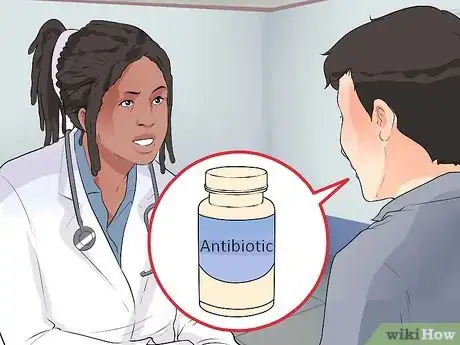
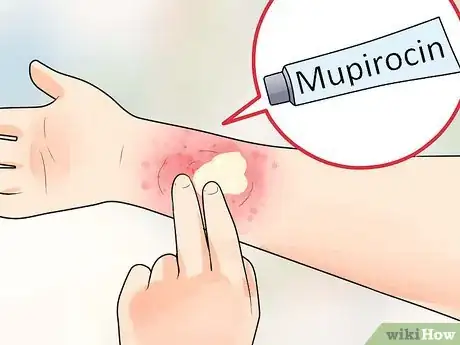
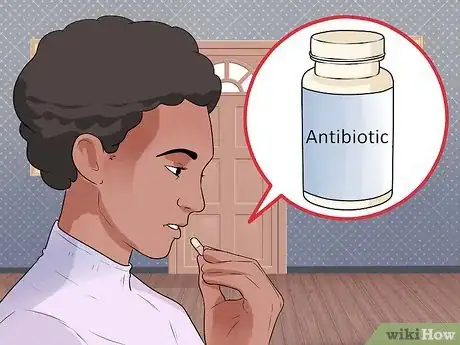

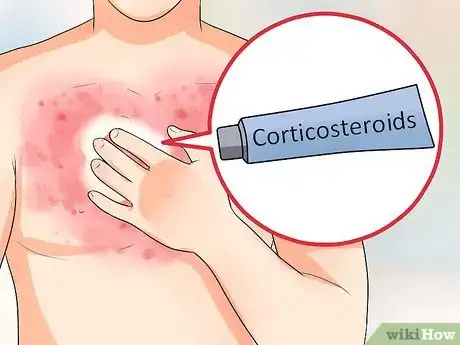
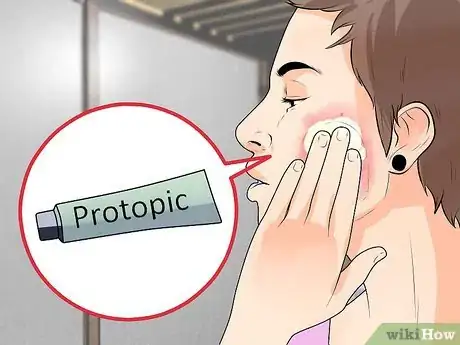
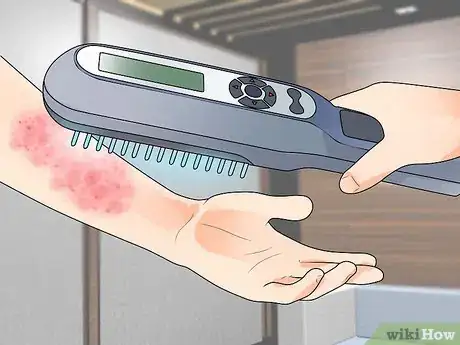


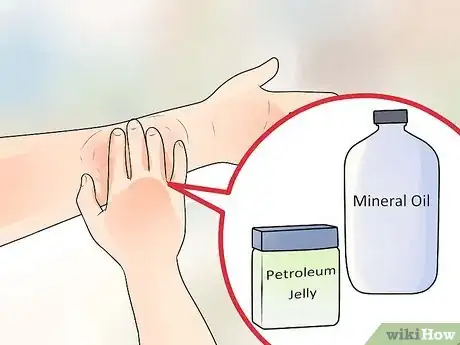
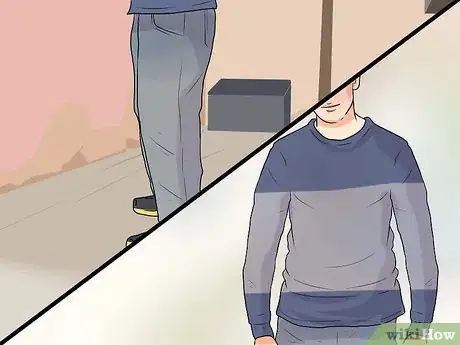


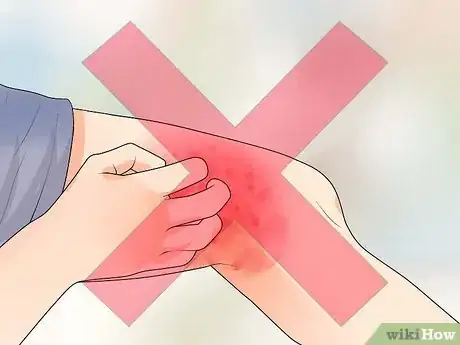
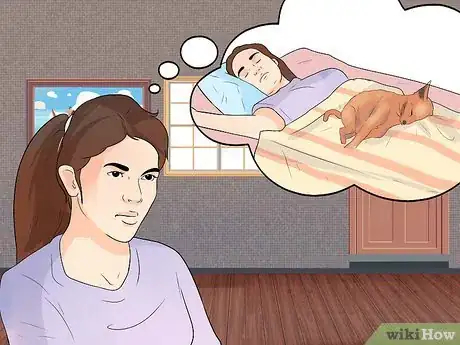


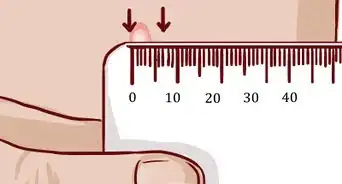


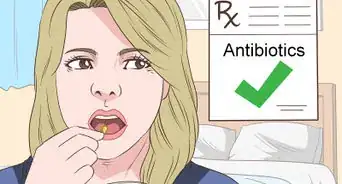
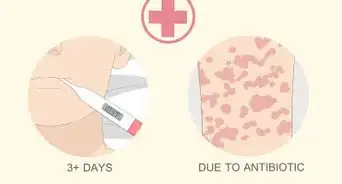





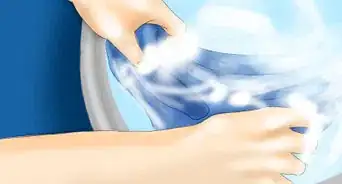
-Step-11.webp)













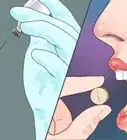




































Medical Disclaimer
The content of this article is not intended to be a substitute for professional medical advice, examination, diagnosis, or treatment. You should always contact your doctor or other qualified healthcare professional before starting, changing, or stopping any kind of health treatment.
Read More...